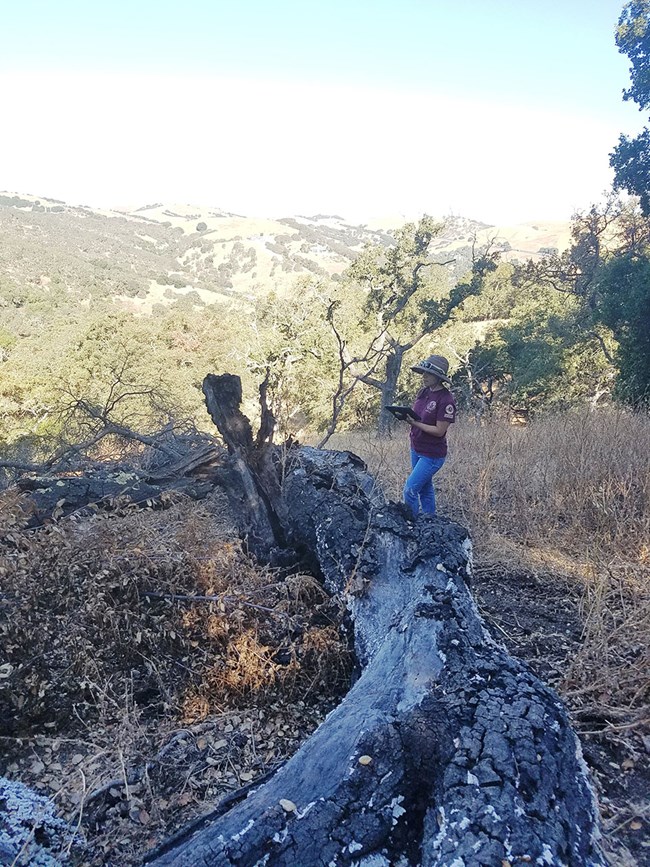Last updated: September 29, 2017
Article
Oak Tree Deaths at John Muir NHS Under Investigation

NPS / Denise Amador
September 2017 - Numerous reports of fallen oak trees on Mt. Wanda at the John Muir National Historic Site over the past few years have led park biologists to question if the rate of tree mortality is increasing at the site, and if so why. Although drought has likely played a role in the trees’ deaths, they suspect that there may be another factors involved. Many trees are exhibiting symptoms of disease and pathogen infections, such as hypoxylon and other cankers. Because Sudden oak death (caused by Phytophthora ramorum) has not been detected at the park, but it has been found nearby so its potential presence has not been completely ruled out.
The park's biologists and arborist recently joined forces to survey the dead oak trees. Using a mobile geodatabase, they are gathering GPS and census data including the type of tree failure, level of decay, and other information that could help roughly estimate the time of death. Preliminary results are expected in late winter or spring of 2018. If it is confirmed that oak tree mortality is increasing, the park will bring in tree disease and pathogen experts to explore options for studying possible causes, including potential graduate research opportunities. For more information contact Fernando Villalba.
